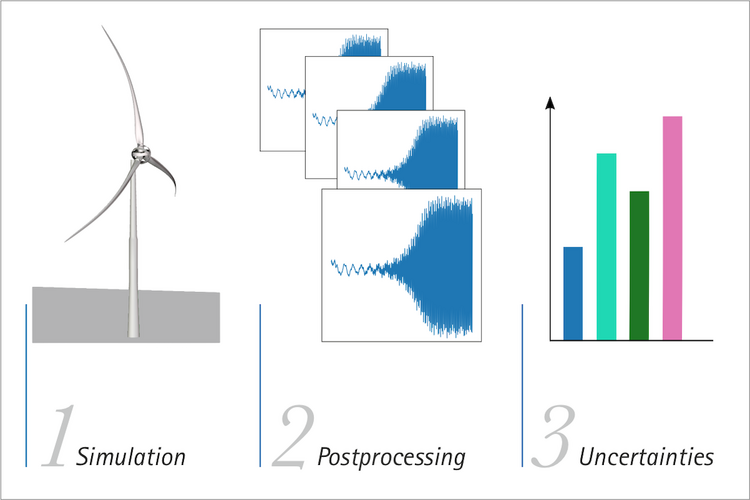QuexUS – Quantification of Uncertainties in the Prediction of Excessive Vibrations in Wind Turbines
 © IWES / Balzani
© IWES / Balzani
| Led by: | Claudio Balzani |
| E-Mail: | research@iwes.uni-hannover.de |
| Team: | Otto Braun, Jelmer Derk Polman |
| Year: | 2019 |
| Funding: | BMWi (FKZ: 03EE3011B) |
| Duration: | 2019-2021 |
Large multi-megawatt wind turbines are slender and highly dynamic systems. The rotors are exposed to aeroelastic interactions with the incoming flow and interact dynamically with the tower, nacelle and support structure subsystems. The coupled vibrations are highly complex and are measured in the time or frequency domain in the design of wind turbines using simulation tools that are usually based on multi-body formulations and beam theory.
For future generations of wind turbines, it is expected that their dynamic reactivity will increase significantly due to the ever larger rotor dimensions, which will increase the risk of excessive vibrations (due to weakly or negatively damped natural oscillations at critical operating points), where turbines oscillate uncontrolled. It can also be assumed that the interaction of components will increase to a greater extent due to the decreasing natural frequencies and cannot be avoided by design. The combination of weak aeroelastic damping with resonances leads to a behaviour of the entire system that is difficult to predict and requires detailed simulations. At the same time, available simulation tools differ in known or unknown ways in the internal implementation of models, in the availability of models or model details and partly in the type of models.
The present research project deals with the question to what extent these differences lead to uncertainties in the prediction of weakly or negatively damped, boundary stable states. In order to quantify the uncertainties of the prognosis, the consortium will perform simulations in the time domain with different tools and combine the results accordingly. This subproject deals with simulations and their evaluation using OpenFAST and HAWC2.
Project partners:
- German Aerospace Center, Institute for Aeroelastics, Göttingen, Germany
- Nordex Energy GmbH, Hamburg, Germany


